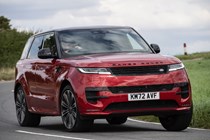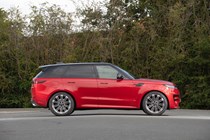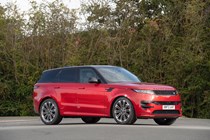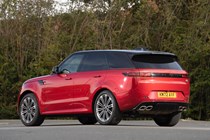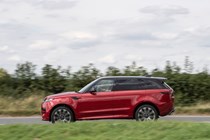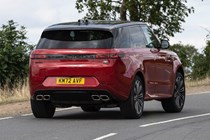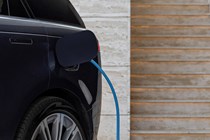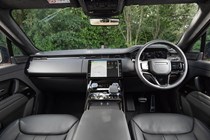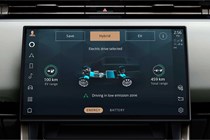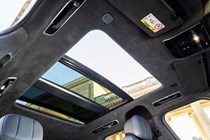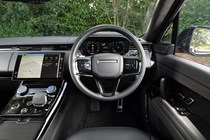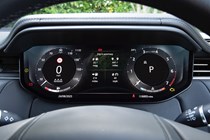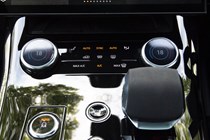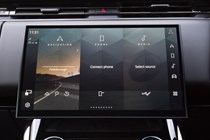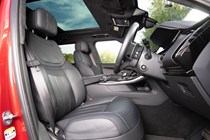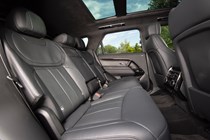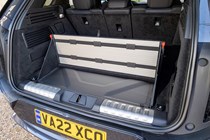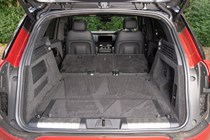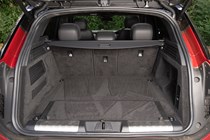
Range Rover Sport engines, drive and performance
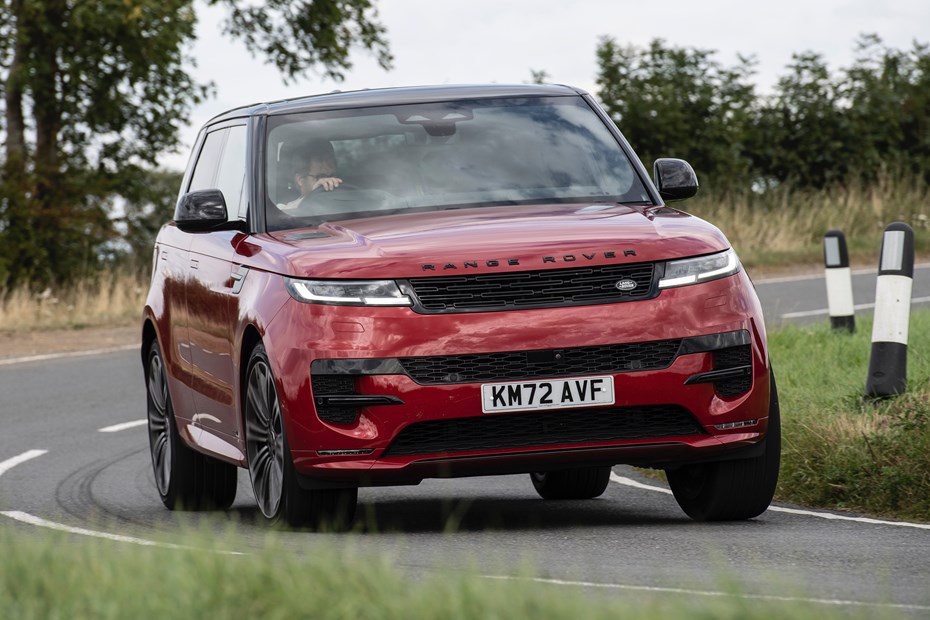
- Six drivetrains are available in total
- Two plug-in hybrids on offer
- Excellent eight-speed auto
Petrol engines
The engine range is wide, varied and excellent throughout, especially on the petrol side of things. It kicks off with a straight-six mild hybrid unit, badged the P400. Here, you get smooth and punchy acceleration that outranks the diesels detailed below (0-62mph takes 5.4 seconds), but you pay for it at the filling station with far heavier fuel consumption.
Next up is the P530. It’s powered by a 4.4-litre V8 engine, and is immensely fast and powerful, especially impressive given the Range Rover Sport’s size and weight. We did find it a bit muted compared to the previous generation’s 5.0-litre supercharged engine, though – and it can be a bit jerky to drive around town, as if it’s not tuned properly to work with the eight-speed automatic gearbox.
If you’re going for a performance version, you may as well go the whole hog and plump for the SV high-performance version. With 635hp, the SV dispatches the 0-62mph dash in 3.6 seconds, and powers all the way to 180mph. To mark it out from the P530, you get lowered suspension, larger 23-inch wheels, and a more aggressive-looking bodykit. You’ll need a seriously focussed SUV like a Lamborghini Urus Performante to go faster.
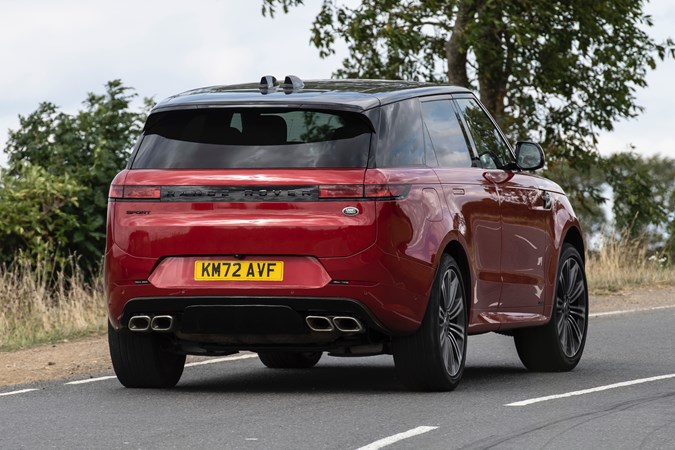
Diesel engines
There two diesels offered, badged D300 and D350. These are our pick of the range for the vast majority of drivers, as they’re powerful, with lots of performance low down, as well as incredibly smooth and refined. With acceptable economy from the diesels and even a nice sound (albeit fake, generated by the car’s speaker system) they’re all the engine you really need. In fact, we’d argue they’re even better than the equivalent six-cylinder diesels found in the BMW X5 and Mercedes GLE.
The D300 might be the entry-level Sport, but with 300hp it’ll still get from 0-62mph in 6.3 seconds and rarely feels wanting in the cut and thrust of the outside lane of the motorway, thanks to its ample mid-range pulling power and responsive automatic transmission. The D350 adds 50hp and cuts the 0-62mph sprint by more than half a second, but in truth it doesn’t feel that much more rapid or muscular.
Hybrid engines
There’s also a pair of interesting plug-in hybrids, badged P440e and P510e. These use a truly massive 38.2kWh battery pack, which gives them as much as 70 miles of range in official WLTP testing. However, our testing pegged this at a more realistic 50 miles in the real world, which will suit most needs.
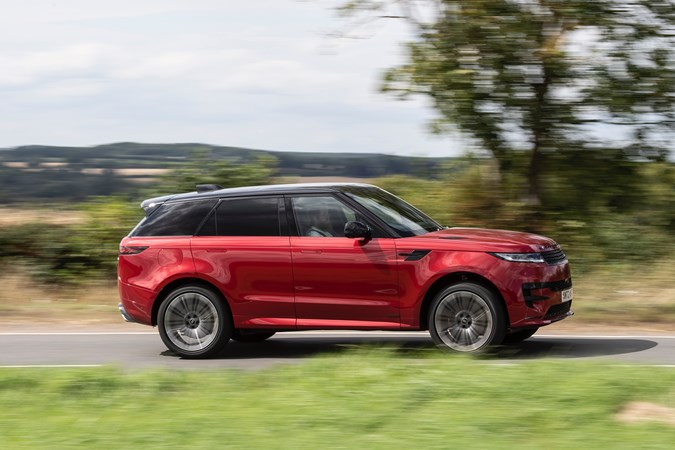
This should mean it’s truly possible to use them as a fully electric car for the vast majority of journeys. They’re paired up to another inline-six petrol, which provides much better performance than the previous four-cylinder Land Rover used in its plug-in hybrids, while accompanied by a smooth and refined soundtrack that really suits the car.
What’s it like to drive?
- Refined, soothing and comfortable
- Excellent body control, especially in Dynamic mode
- Ride quality is very impressive
The full-sized Range Rover is incredibly comfortable but the price you pay for that is that it leans like a ship in the corners. The Range Rover Sport offers a good 90% of that ride comfort, but instead of leaning it corners incredibly flat, seemingly defying physics with the speed it can carry through a corner. It can feel a little bit busy on 22- and especially 23-inch wheels on certain surfaces, but if ride quality is paramount, you can spec your Sport with 20-inch wheels for better comfort.
There is one caveat, though – we’ve only driven range-topping cars so far. Certain features that aid with cornering, including clever active anti-roll bars and rear-wheel steering, only come standard on the range-topping P510e and P530 models. Lesser cars can only have these as part of a £5,330 ‘Stormer’ handling pack – we’ll report back when we’ve tried cars without this fitted.
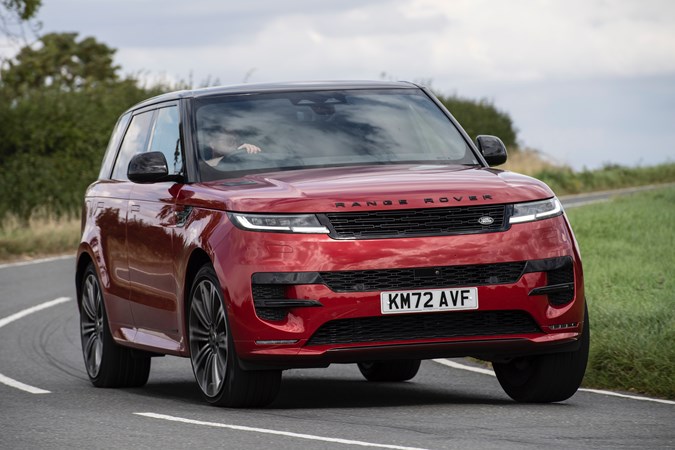
The Sport’s steering is precise and feels quick, aided by the rear wheel steering. It resists roll for such a big car and grips well, but it never feels as agile or playful as a Cayenne, even in P530 guise. If that’s a dealbreaker for you, Land Rover can offer you the Range Rover Velar, which feels more driver focused while a Sport SV is on the way. But it’s not all about handling – where the Sport really shines is on the motorway, where it covers huge distances effortlessly and with impressive comfort. All that marks it down is the disappointing amount of wind noise.
Further mention can be made to how the Range Rover Sport handles off-road. This is one of the finest off-roaders money can buy, with capability far beyond what most drivers will ever even dream of using. The Land Rover Defender is more capable still, but even the most demanding driver will struggle to get the Range Rover Sport stuck anywhere outside of a serious off-road course.


